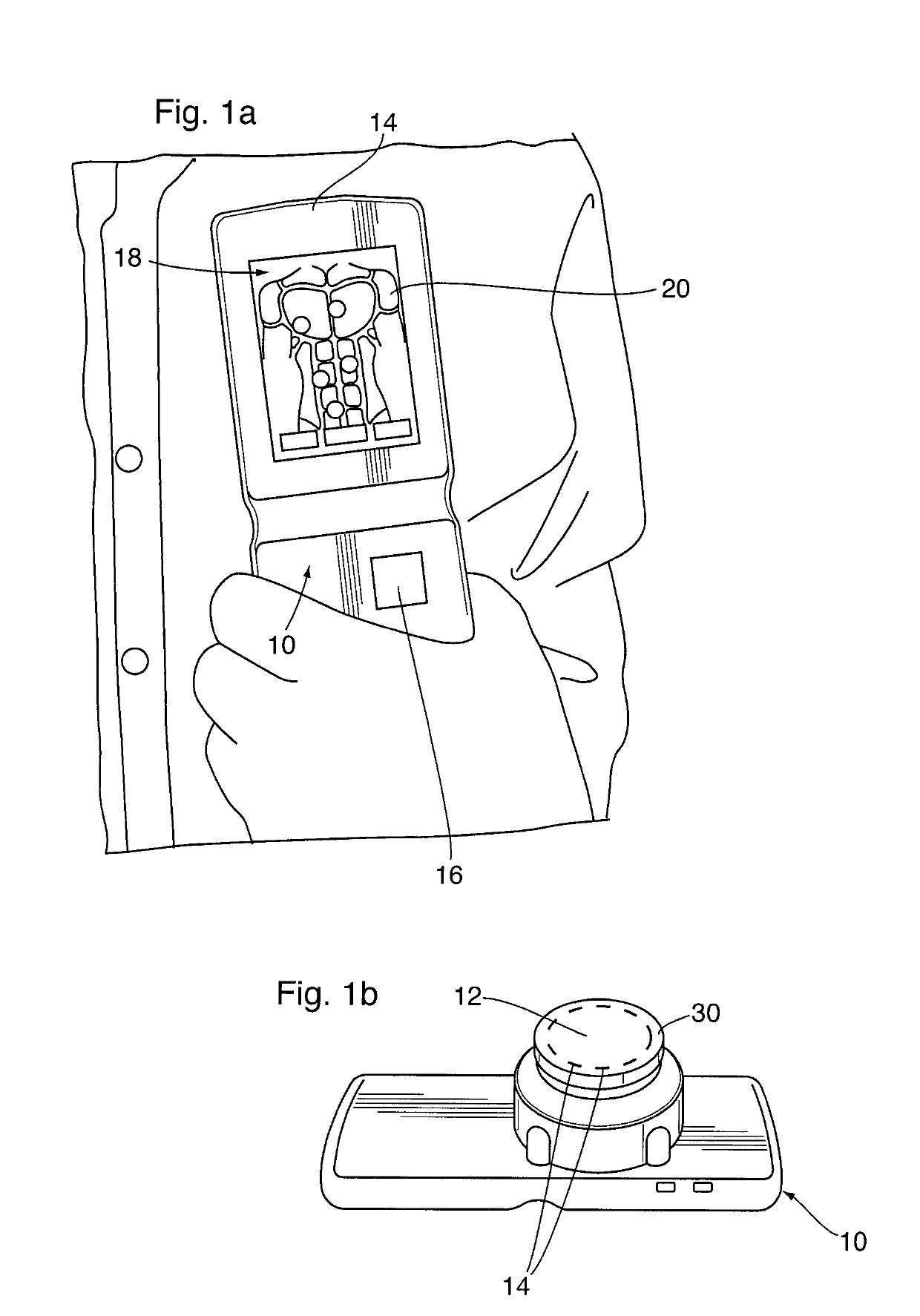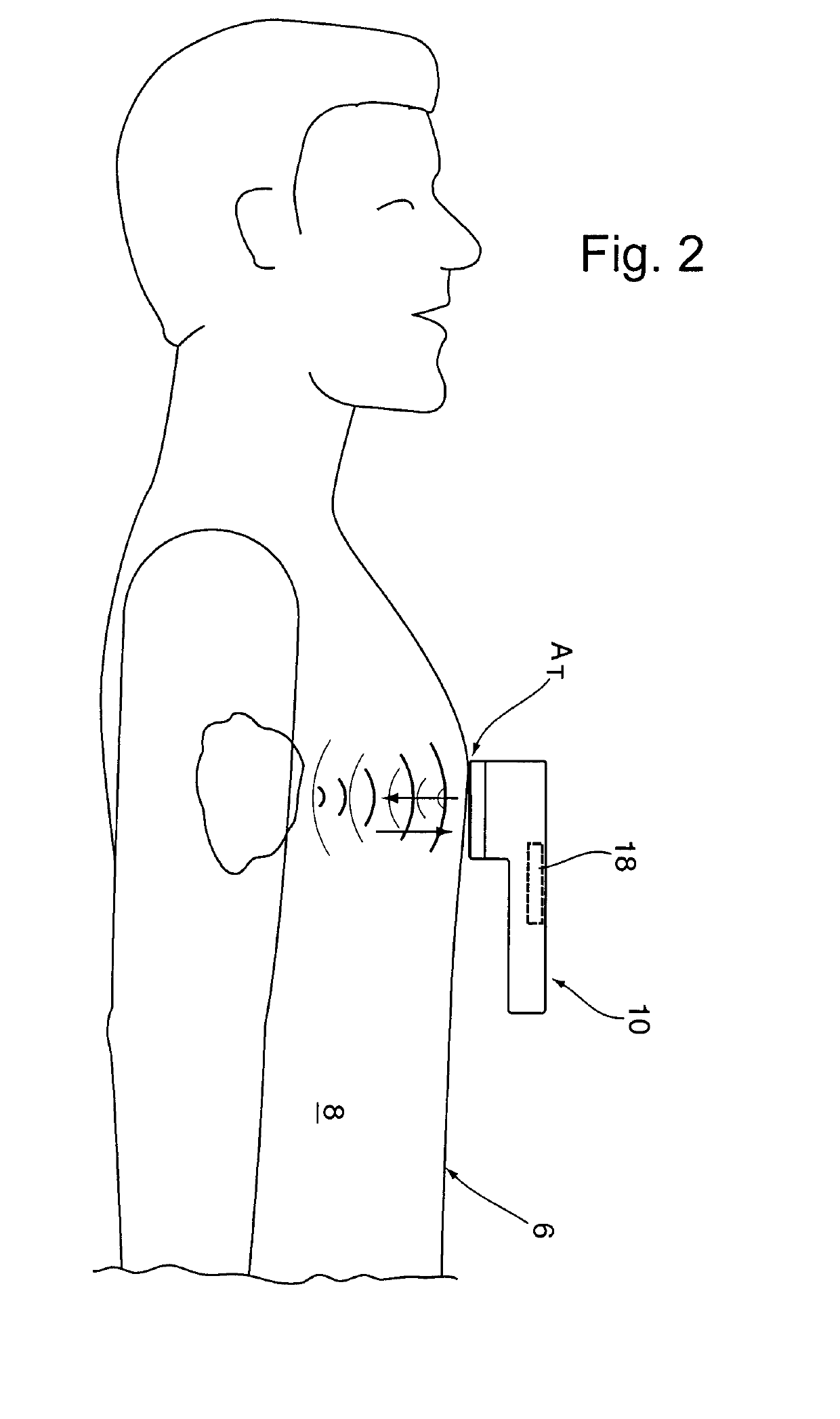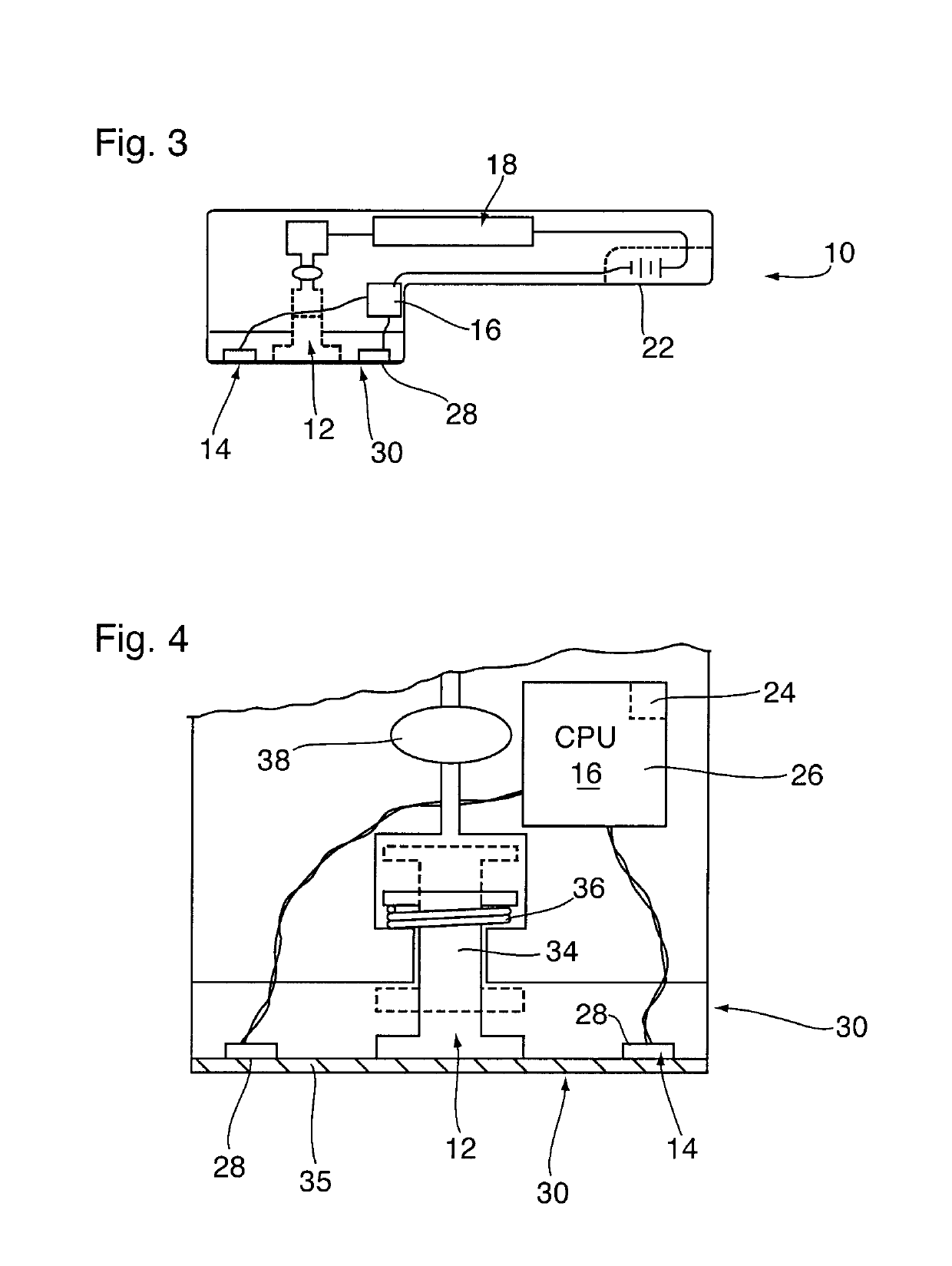Device and method using damped harmonic analysis for automated pulmonary and abdominal examination
- Summary
- Abstract
- Description
- Claims
- Application Information
AI Technical Summary
Benefits of technology
Problems solved by technology
Method used
Image
Examples
Embodiment Construction
[0073]The following description describes a preferred embodiment of the invention and is used for descriptive clarity and is not intended to limit the application and use of the invention.
[0074]Reference may be had to FIGS. 1a and 1b which illustrate a portable diagnostic device or analyzer 10 used in the diagnosis of a potential pulmonary injury or condition in a patient 6 (FIG. 2) in accordance with a preferred embodiment of the invention. As will be described, the analyzer 10 is operable to generate and impart mechanical disturbance as an output pressure wave (shown as 100 in FIG. 5) or force on the patient's chest 8; and then detect and analyze the surface vibrations or the return reflected wave (shown as 150 in FIG. 6) produced thereby.
[0075]As shown in FIGS. 1a and 1b, the analyzer 10 includes a pulsed force generator 12, for generating the output pulsed force, a sensor assembly 14 for detecting return wave energy 150 and converting the detected energy into electric signals, a...
PUM
 Login to View More
Login to View More Abstract
Description
Claims
Application Information
 Login to View More
Login to View More - R&D
- Intellectual Property
- Life Sciences
- Materials
- Tech Scout
- Unparalleled Data Quality
- Higher Quality Content
- 60% Fewer Hallucinations
Browse by: Latest US Patents, China's latest patents, Technical Efficacy Thesaurus, Application Domain, Technology Topic, Popular Technical Reports.
© 2025 PatSnap. All rights reserved.Legal|Privacy policy|Modern Slavery Act Transparency Statement|Sitemap|About US| Contact US: help@patsnap.com



